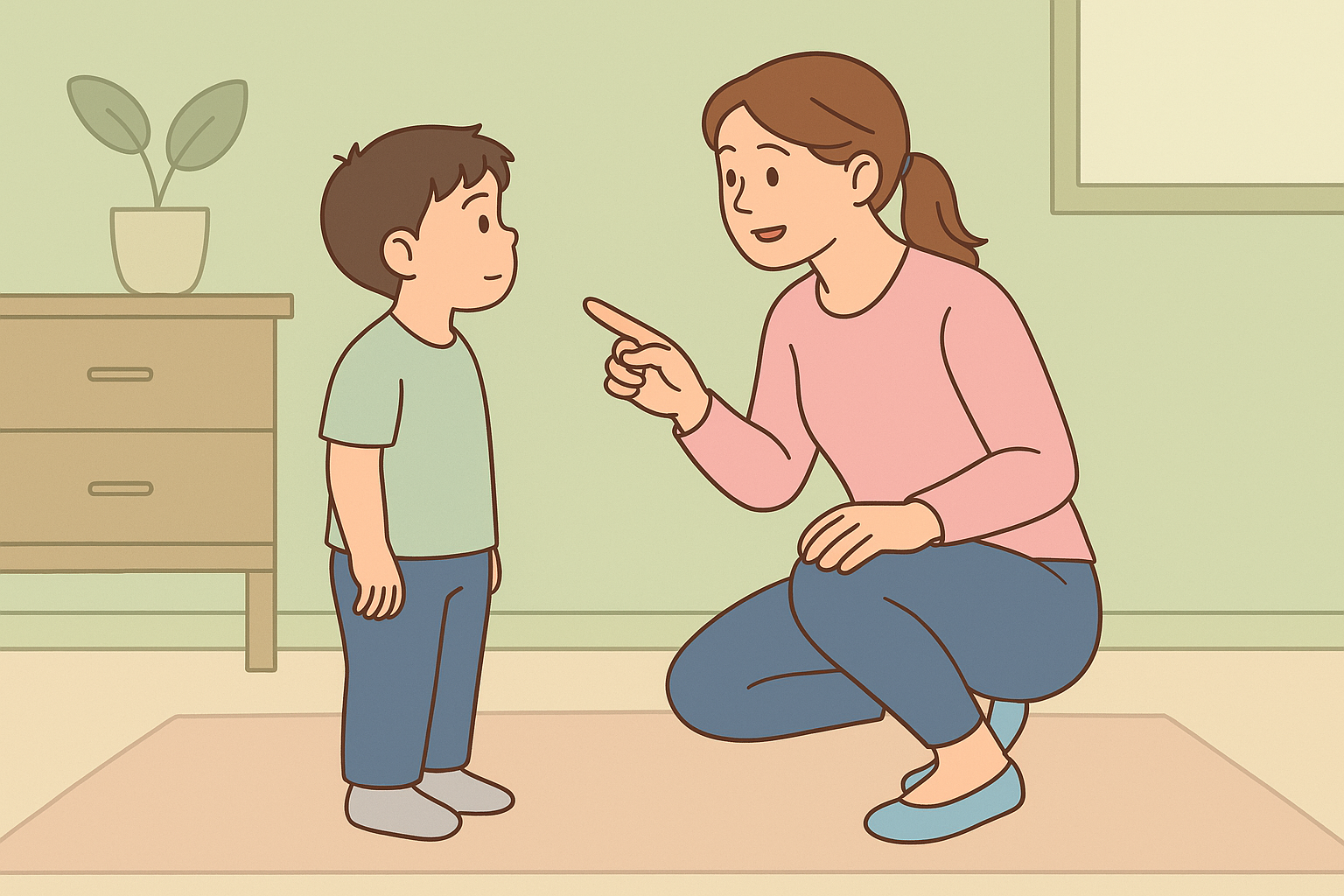Helping Kids Follow Directions — Even When They Don’t Want To
Helping Kids Follow Directions — Even When They Don’t Want To
You ask your child to put on shoes, clean up, or get in the car — and suddenly you’re stuck in a standoff. They heard you, but they’re not moving.
Following directions isn’t just about listening — it’s about processing, motivation, and connection. The secret isn’t repeating yourself louder — it’s making your directions clear, calm, and doable.
Why Kids Resist Directions
When kids ignore directions, it’s rarely defiance.
They may be:
Deeply focused on something else
Overwhelmed or tired
Seeking independence or control
✨ Children cooperate more when they feel heard and capable, not cornered.
👉 See also: Teaching Kids to Listen Without Yelling
1. Get Their Attention First
Before giving a direction, make sure your child is truly listening.
Try:
Saying their name and waiting for eye contact.
Getting down to their level.
Touching their shoulder gently before speaking.
✨ Connection comes before instruction.
Skill focus: communication, focus, respect
2. Use Simple, Clear Language
Children process shorter, direct phrases faster.
Instead of:
“You need to hurry up and get ready for school or we’ll be late!”
Try:
“Shoes on, please.”
✨ The simpler the words, the faster the compliance.
Skill focus: clarity, comprehension, structure
👉 See also: Setting Boundaries That Actually Stick
3. Give One Direction at a Time
Multiple instructions can overwhelm a child’s working memory.
Instead of:
“Put your toys away, wash your hands, and get your backpack.”
Say:
“First toys, then hands.”
✨ Fewer steps mean more success — especially for younger kids.
Skill focus: sequencing, focus, memory
4. Give Time to Transition
Kids need mental space to shift from one activity to another.
Use countdowns or cues:
“In five minutes, we’ll clean up.”
“After this song, it’s bedtime.”
“When the timer rings, we’ll stop playing.”
✨ Warnings prevent resistance by building predictability.
Skill focus: time awareness, self-regulation, cooperation
5. Offer Choices Within Limits
When kids feel powerless, they resist. Giving limited choices keeps you in charge while giving them autonomy.
Say:
“Do you want to brush teeth first or put on pajamas?”
“You can walk or hop to the car — your choice.”
✨ Choice transforms obedience into cooperation.
Skill focus: independence, self-control, problem-solving
👉 See also: Preventing Power Struggles Before They Start
6. Stay Calm When They Push Back
Resistance escalates when you react emotionally. When you stay calm, you keep control of the tone — and the moment.
Try:
“I can see you don’t want to right now.”
“Let’s take a breath together.”
“We’ll try again in a minute.”
✨ Calm is contagious.
Skill focus: co-regulation, patience, emotional safety
7. Use Positive Follow-Up
After your child follows through, reinforce the effort — not just the outcome.
Say:
“Thanks for listening right away.”
“That was great teamwork.”
“You stopped and thought before acting — that’s self-control.”
✨ Recognition builds intrinsic motivation.
Skill focus: self-esteem, motivation, reinforcement
👉 See also: Encouraging Cooperation Without Bribes or Threats
8. Reflect on What Works
If directions keep getting ignored, step back and ask:
“Was I clear?”
“Did I give too many steps?”
“Was my tone calm or frustrated?”
✨ Adjusting your approach works better than escalating your volume.
Skill focus: reflection, awareness, communication
Key Takeaways
Children listen best when they feel connected, not controlled.
Keep directions short, calm, and actionable.
Offer choices and countdowns to reduce resistance.
Reinforce effort, not fear or reward.
Following directions isn’t about obedience — it’s about understanding.
When your child feels calm, capable, and connected, they don’t just follow your lead — they trust it. And that’s the foundation of every respectful, cooperative relationship.
This content is for educational purposes and is not a substitute for professional medical or psychological advice.
Popular Parenting Articles


